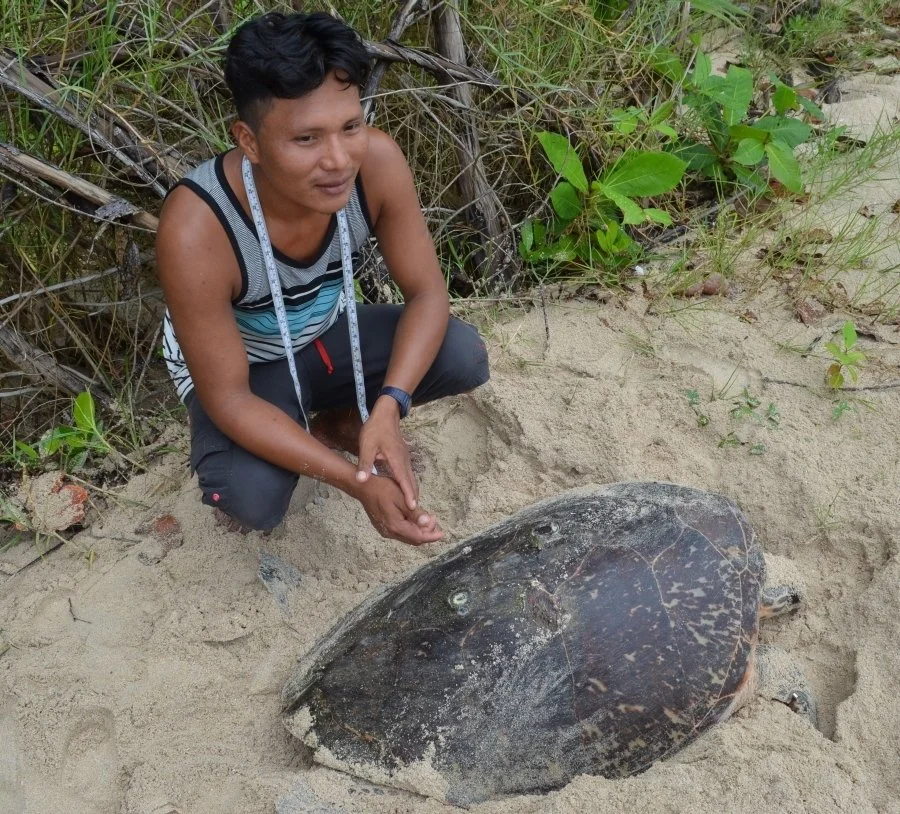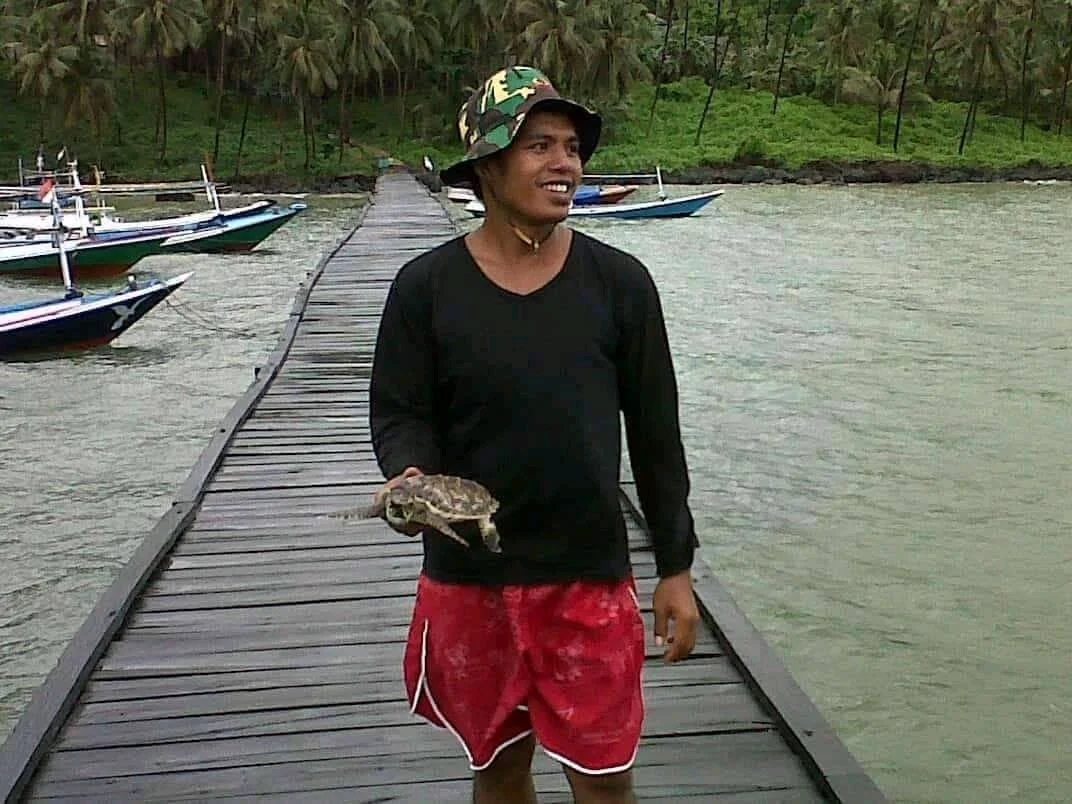April Billion Baby Turtles Report
Past Grant Reports
Our Billion Baby Turtles program is on pace for a record year of saving sea turtles. Check out the results from grants from last year and our April grants from 2022!
Comunidad Protectora de Tortugas de Osa, Osa Peninsula, Costa Rica
This organization protects especially olive ridleys and green turtles and sporadically hawksbills and leatherbacks at 3 beaches (Playa Carate, Pejeperro, and Río Oro). This is one of the most biodiverse areas in Costa Rica. Since 2019 Tortugas de Osa monitoring and research projects offer the opportunity to involve different local actors, volunteers and conservation organizations, to contribute to the protection and monitoring of marine turtles.
During the 2021-2022 nesting season Billion Baby Turtles supported this project with US$ 10,000, helping to protect a total of 6,278 ridleys and 379 pacific green nesting females. The hatchling emergence for olive ridleys was 60% and 83.4% for green turtles. The estimated total production of baby turtles across all their 3 beaches for ridleys was 450,000 and 25,000 for the Pacific green turtles.
Olive ridley hatchlings from Costa Rica. Photo from COPROT.
Guanacaste Dry Forest Conservation Fund, Nancite, Costa Rica
Playa Nancite is the second most important nesting site for olive ridley sea turtles in Costa Rica. The arribadas of these turtles generally result in between 20,000 and 116,000 nests each year. Green turtles also nest at Nancite beach, but in much smaller numbers (between 20 and 65 nests per year). Turtle biologist Luis Fonseca has been studying the sea turtles of this area for more than a decade. His research covers the prey/predator phenomenon between nesting sea turtles and jaguar populations at Nancite beach, the first beach where such interactions have been extensively documented. With a US $3,000 grant, SEE Turtles supported Luis Fonseca research at this important beach.
In the 2021 season 68,230 nests of olive ridley turtles were protected, helping to get into the ocean 3,872,716 baby turtles. They also protected 26 nests of green turtles, helping 1,165 hatchlings of this species. With US$ 3,000 Billion Baby Turtles supported this beach for continue its work this year.
New Grants
Sea Turtle Conservancy, Panama (US $ 7,000)
After more than 20 years of sea turtle research in Bocas del Toro Province, Anne and Peter Meylan formed a partnership with STC in 2003 to monitor increasing nesting hawksbills along the Bocas coast (covering ~50 km of beach in recent years). The area of concentrated work by the Meylans has been three important nesting beaches: Small Zapatilla Cay, Big Zapatilla Cay (both since 2003), and Playa Larga (since 2006), all of which lie completely within the boundaries of the Bastimentos Island National Marine Park (BINMP). Research activities are conducted by beach monitors hired from local indigenous communities with help during most years from international student volunteers. In the last 8 years and thanks to the protection of the area, the number of hawksbill nests have doubled. In 2021, more than 140,000 hawksbill hatchlings are estimated to have been protected on BINMP beaches.
STC researcher Arcelio with a hawksbill turtle in Panama. Photo by Peter & Annie Meylan
Asociación Salvemos las Tortugas de Parismina (ASTOP), Costa Rica (US$ 3,000)
ASTOP protects the 6-km beach between the Parismina River and the Pearl Lagoon. This stretch is among the 10 most important beaches for nesting leatherbacks on the Costa Rica’s Caribbean coast. This organization protects more than 200 leatherback, more than 100 green turtles, and sporadic hawksbills that nests every year. In previous monitoring work, some season more than 20,000 hatchlings can be protected at this beach, with a calculated cost of 60 cents per baby turtle saved.
Ecosystem Impact Foundation, Indonesia (US$ 10,000)
This nonprofit organization works in Bangkaru Island protecting primarily green turtles and sporadic nesting leatherbacks. In addition to the protection of nesting turtles, Ecosystem Impact develops law enforcement capacity, campaign and advocacy work, community awareness, rangers training, and social media education.
Last season, Ecosystem Impact implemented for the first time a conservation program in this area, working with the community and rangers patrols. This work has led to the increased protection for these turtle nesting populations in the island, with a result in reduction of illegal collection. They also collected data on the project focus species which has fed into international research and conservation discussion. Due to concerns around turtle nests being lost to beach erosion and lizard predation, relocation of most at risk nests has been implemented and they are also working in further mitigation and research for these populations. With US$ 10,000 they expect to protect around 62,500 baby turtles for this season
Ocean Foundation: Guanahacabibes National Park, Cuba (US$ 5,000)
Since 1998, the Ocean Foundation’s Cuba Marine Research and Conservation Program (CMRC) has built strong scientific collaboration and conservation programs between Cuba, the United States, and neighboring countries that share marine resources. Eight beaches are patrolled during the nesting and hatchling seasons (May to October) on the Guanahacabibes Peninsula. As for green turtle nesting population, it is the second largest of the Cuban archipelago and also exhibits high levels of hatching success.
The main goals of this project are to monitor and protect nesting areas, record morphometric, nests and eggs information, study, temperature and humidity to determine the best conditions, expand studies on existing genetic diversity for this area, assess the impact of climate change on the reproductive success of sea turtles, train university students and volunteers, and develop educational work in local communities. With this grant, Billion Baby Turtles will help to protect around 35,000 baby turtles in this area.
Green turtle nesting in Guanahacabibes. Photo from Dr. Julia Azanza.
Sea Turtle Inclusivity Fund
PAMALI, Indonesia
SEE Turtles launched our Sea Turtle inclusivity Fund in 2021 as a way to increase inclusion, diversity, and local community participation in our field. Our first three winners were from Latin America, Keithlyn Rankin of Costa Rica, Luna Viera of Brazil, and Royner Carrasquero of Venezuela. We’re excited to announce our first winner from Asia, Busdar Marabatuan from PAMaLi Indonesia.
With a grant of US $2,517, the Inclusivity Fund will cover Busdar’s salary for a year in the position of Ranger Coordinator, where he will be responsible for 4 Rangers. “My career goal in the position of Ranger Coordinator is to contribute to the development and progress of turtle conservation and strive to be an investment by creating a dynamic and innovative work environment.” -Busdar
Busdar with a juvenile hawksbill turtle in Indonesia. Photo: PAMaLi.




